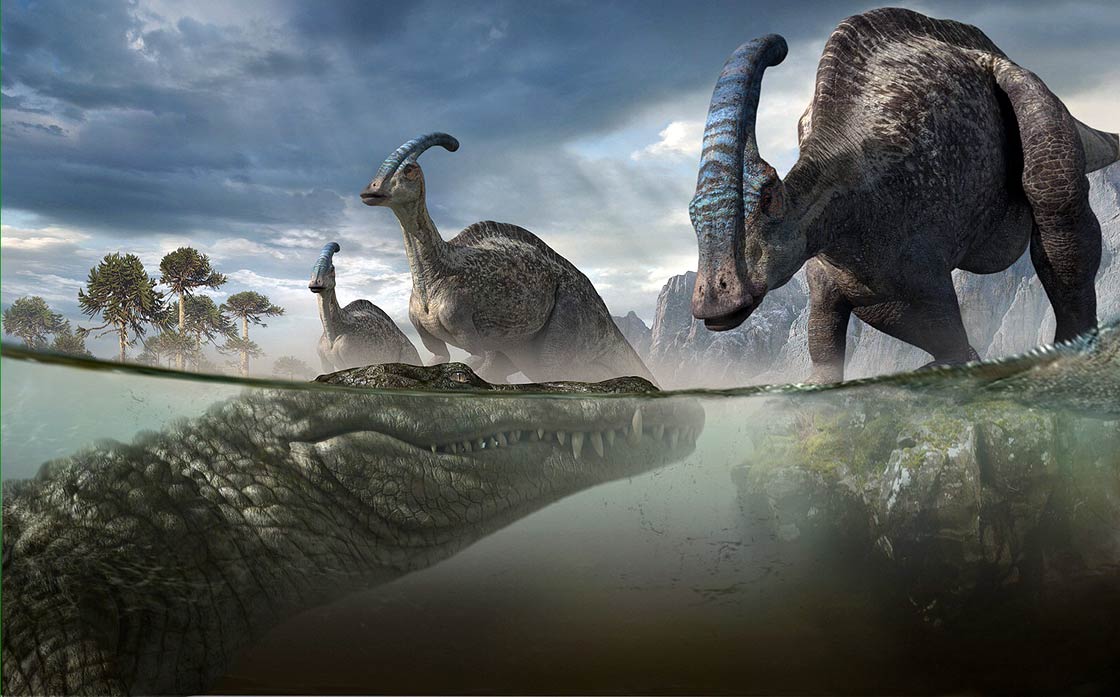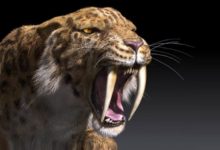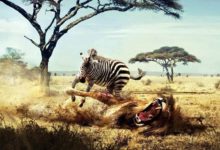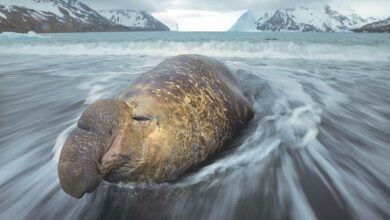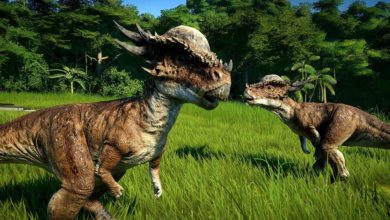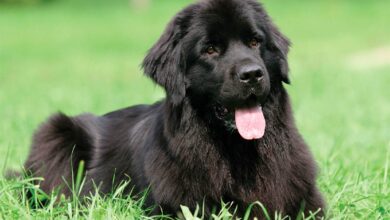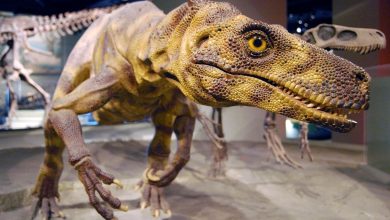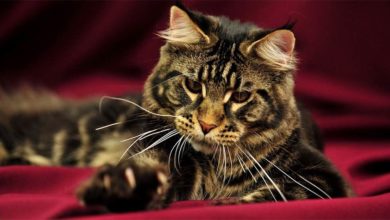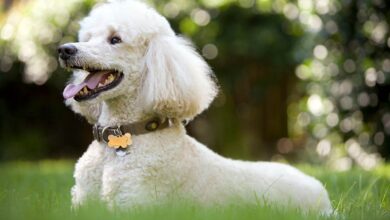Deinosuchus – dinosaur killer
Deinosuchus – a terrible crocodile
Seaboard sentinel and dinosaurs killer
If it lived today, there would be no larger, more dangerous and relentless reptile. It was cunning and dexterous in its hunts. Seaboard sentinel, a dinosaurs killer. Let’s take a closer look, get to know its habits and find out the scope of its capabilities during its reign on Earth.
Introduction
In the swamps and rivers of prehistoric North America, there roamed a monstrous creature that ruled the waterways with an iron fist – the Deinosuchus. This ancient reptile, which lived over 70 million years ago during the Late Cretaceous period, was one of the largest and most fearsome crocodylomorphs to ever exist.
The name Deinosuchus translates to “terrible crocodile” in Greek, and it’s not hard to see why. This beast was a true apex predator, with a skull that measured up to 1.5 m (5 feet) in length and a body that stretched over 12 meters (39 feet) long. Its teeth were massive, some measuring up to a foot in length, and it had a bite force that could easily crush the bones of its prey.
But what sets the Deinosuchus apart from its modern-day counterparts is its sheer size. While the largest living crocodiles rarely exceed 6 meters (20 feet) in length, the Deinosuchus could grow to be almost twice as long. And it wasn’t just its length that was impressive – this reptile weighed in at over 10,000 pounds, making it one of the heaviest crocodylomorphs ever discovered.
Despite its size, the Deinosuchus was a nimble predator. It had a streamlined body and powerful tail that allowed it to move swiftly through the water, and its feet made it a strong swimmer. It also had a unique adaptation that allowed it to survive in both freshwater and saltwater environments – glands in its tongue allowed it to excrete excess salt, making it possible for the Deinosuchus to live in the brackish waters of coastal regions.
While the Deinosuchus was undoubtedly a formidable predator, it was not invincible. It shared its habitat with other giant creatures such as Albertosaurus and Appalachiosaurus, and would have had to compete with them for resources. And despite its size and strength, it was not immune to disease or injury.
Today, the legacy of the Deinosuchus lives on in the fossils that have been discovered throughout North America. These ancient remains have given us a glimpse into the world of this incredible reptile, and have allowed us to piece together its story. But there is still so much we don’t know – what did the Deinosuchus eat? How did it mate and reproduce? What led to its eventual extinction?
As we continue to uncover more about this prehistoric predator, one thing is clear – the Deinosuchus was a true marvel of evolution, a creature that pushed the boundaries of what was possible and left an indelible mark on the world.

Classification
- Kingdom: Animalia
- Phylum: Chordata
- Class: Reptilia
- Superorder: Crocodylomorpha
- Order: Crocodilia
- Superfamily: Alligatoroidea
- Genus: †Deinosuchus
- Species:
- Deinosuchus rugosus
- Deinosuchus riograndensis
Name
The name Deinosuchus is derived from two Greek words: δεινός / deinos (terrible, dreadful) and σοῦχος / souchos (crocodile). Therefore Deinosuchus means a ‘frightening crocodile’.
Areas of occurrence
Its reign took place in the Campanian Age, the fifth age of the Late Cretaceous (80 – 73 million years ago). It swam in the rivers of the North America and in the inland sea covering the continental block. Among other places it lived in the present-day Georgia, Montana, New Mexico, Mississippi, Alabama, Wyoming and Utah.
Supposedly it also hunted in the Mexican regions. Crocodiles inhabiting the western areas of North America were larger than those living in the east. It is considered and apex predator in its range. It preferred fresh water and mixes of fresh and salt water (brackish water – a result of mixing seawater and fresh river waters in bays and estuaries).

Characteristics
Appearance
A Deinosuchus had a snout most similar to that of today’s alligator: it possessed strong teeth capable of crushing thick bones. These teeth were mounted on jaws that delivered a bite force of up to 10.5 tons/cm2. This immense power allowed it to devour sizable, armored animals, such as giant sea turtles, with ease.
The snout was wide and bulbous at the end. Four teeth were located at the front of both the upper and lower jaws. The first and second pairs varied in size – the second pair was substantially larger – but all the teeth were thick and robust. The smallest teeth grew at the back of the jaw; they were neither sharp nor long. Most likely, their role was to crush the bones or shells of its victims, while the front teeth held the prey in place. When the jaw was closed, the fourth teeth of Deinosuchus lower jaw were prominently displayed.
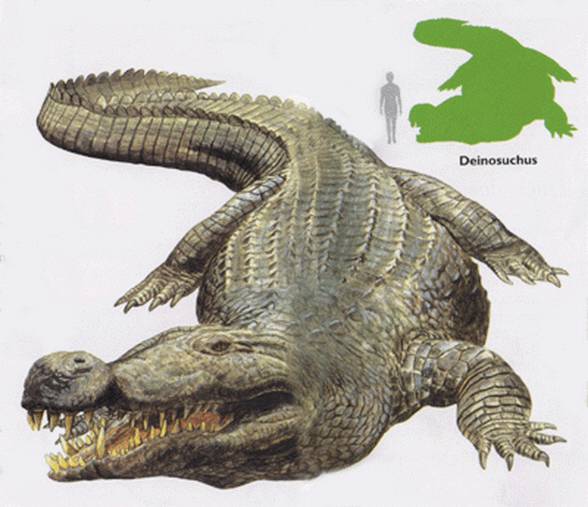
Deinosuchus vs. Sarcosuchus
Deinosuchus had a larger head than a Sarcosuchus – a relative of present-day crocodiles living in the Early Cretaceous. Deinosuchus (about 12 m / 39 ft) was of a similar size to the Sarcosuchus (11 – 12 m / 36 – 39 ft). Both had also a similar weight – they weighed up to 8 – 8.5 tons. Most likely the Deinosuchus was more dexterous in a land hunt, moving faster and snatching prey more easily. Sarcosuchus on the other hand, was more agile in water, with fish being the foundation of its diet.
The skull of Deinosuchus was more massive and its jaws were stronger. The body was covered with thick, round scales, dark in color. The shape of body and snout of this prehistoric creature suggests that its habits could resemble those of a present-day alligator, though its size could advocate the opposite. It had a large tail, yet a bit smaller than the Sarcosuchus, which was a faster swimmer, its eyes moving vertically both over and under water. The land was more natural habitat for a Deinosuchus, water being a better environment for the Sarcosuchus. Disparity in those animals’ diets also supports such an opinion.
Deinosuchus vs. Sarcosuchus which would win?
It would be a terrifying fight, but if we had to bet, we bet on Deinosuchus 😉 We are curious what is your opinion – who would win: Deinosuchus or Sarcosuchus if they had the opportunity to meet and fight, hmm :)? Of course this is a hypothetical question, because these crocodiles never met – they lived on different continents and in different times.
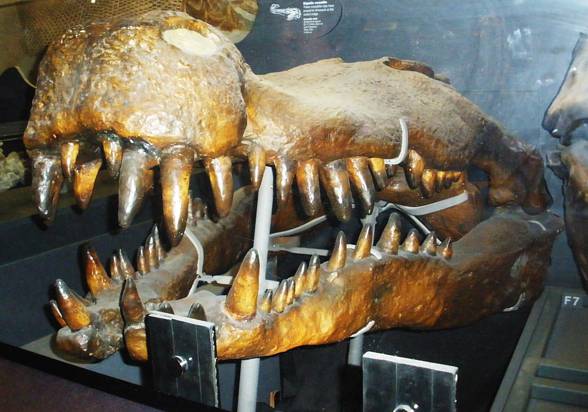
Giant crocodiles
In case of the Deinosuchus and the Sarcosuchus, earlier inhabiting the African continent, we are dealing with two independent lines of evolution of these great crocodiles. Deinosuchus is more similar to the present-day crocodiles than the Sarcosuchus.
According to Paul Sereno (paleontologist that discovered the Sarcosuchus skeletons) in some evolutional periods such circumstances may develop that allow the crocodiles’ size to reach even the size of the largest predatory dinosaurs. However for such a phenomenon to occur there must be prey sizable enough for those predators to hunt for. Today there are no animals of such size, that is why the predators including crocodiles are smaller. It is not impossible however for crocodiles to become substantially larger in the future.
Why did they become extinct
Why the extinct Deinosuchus or Sarcosuchus did not survive until recent times, if crocodiles still inhabit the Earth? Most likely the limited mobility of these animals and lack of food in their ranges brought about their extinction.
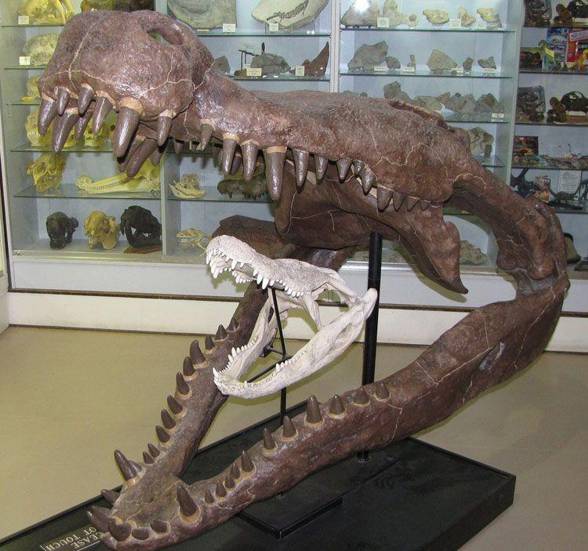
Diet and hunting strategy
One could say that it was a natural born killer, additionally with a quite diversified diet. It hunted for large sea turtles covered with very hard shells, fish and other sea animals. However the most astounding theory concerning the Deinosuchus life style is the possibility of it hunting giant land animals, more precisely – dinosaurs.
Undoubtedly the element of surprise was its great asset. When a dinosaur approached a water reservoir, the Deinosuchus awaited underwater, closely observing the potential victim. When a dinosaur was close enough, the predator leaped out of the water, snatched the prey with its strong teeth and dived deep along with the victim aiming to drown the dinosaur. This technique allowed it to hunt down a truly massive animal, as theropods were very poor swimmers. Additionally the bite force and physical capabilities of the crocodile did not rule out such a behavior.
Therefore the Deinosuchus could be called a ‘river tyrannosaur’ – it was strong, carnivorous, it did not have any natural enemies and could devour a substantially large prey. It hunted for ornithopods – bipedal, herbivorous dinosaurs, well adapted to running.
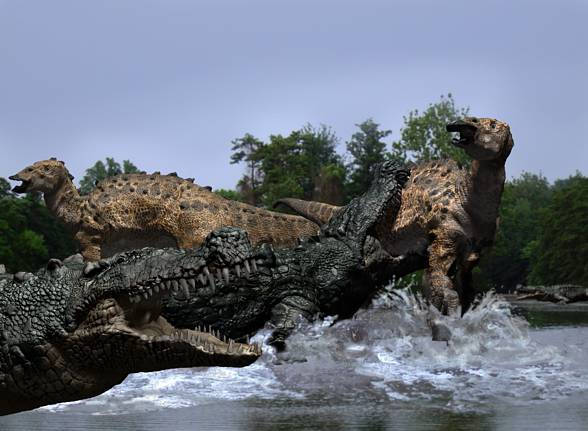
Did the Deinosuchus hunt for theropods?
Interestingly, preserved remains of two North American predatory dinosaurs (therapods) – Albertosaurus and Appalachiosaurus – bear marks of Deinosuchus’ bites. It remains unclear if those specimens were a target of a coincidental attack or was it the normal state of affairs and Deinosuchus also hunted for predators. However the fight of a 8 meter crocodile and a 9 meter Albertosaurus surely must have been a thrilling image. If such confrontations were true it may partially explain the Deinosuchus’ vast size.
Most likely the eating habits of these swimming reptiles depended on the inhabited region. Crocodiles from the eastern areas of North America (smaller ones) could have an opportunistic diet, feasting on what could be easiest and fastest acquired i.e. fish, sea turtles, small land dinosaurs. Western populations (larger than their eastern relatives) could easily cope with devouring large dinosaurs that approached water reservoirs. Remains of turtle shells were found in the coprolites, which supports the view of Deinosuchus being adapted to eating even the hardest parts of victims’ bodies. This predator’s menu was more diversified that this of a Sarcosuchus, which mostly fed on fish.

Growth
Present-day alligators grow about 30 cm annually in terms of length. As Deinosuchus comes from the same line of evolution, a similarity also in that matter is highly probable. Withal, the time required by the Deinosuchus to reach final size could be different. Therefore it is hard to establish how long the largest crocodile was.
Most found fossils suggest that these animals were fully developed in terms of length after about 35 years. Another theory considers that it is uncertain if the growth rings on scales appeared annually.
Conceivably – contrary to present-day crocodiles – Deinosuchus grown much faster and lived practically equally long.
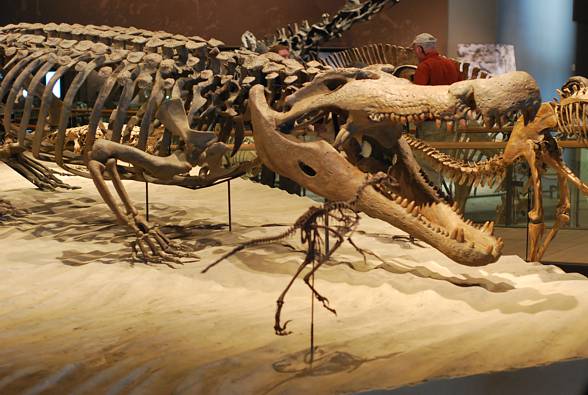
Detailed characteristic / size
Deinosuchus
- Length: 8 – 12 m (26 ft – 39 ft), 10.6 m on average (35 ft); some estimates (highly questionable) reach even 15 m (49 ft)
- Weight: 2,500 – 8,500 kg (depending on the estimation and area of occurrence)
- Bite force: up to 10.5 tons/cm2
- Lifespan: 35 – 50 years
Occurrence
- 80 – 73 million years ago (Late Cretaceous)
- North America
Deinosuchus is not as well-researched species as the Sarcosuchus, therefore a trustworthy size estimate can hardly be established. Probably the Deinosuchus, as well as Rhamphosuchus will ‘diminish’ along with another fossil discoveries 🙂 Currently it is considered one of the largest predators in history right beside the Sarcosuchus, Rhamphosuchus or Purussaurus.
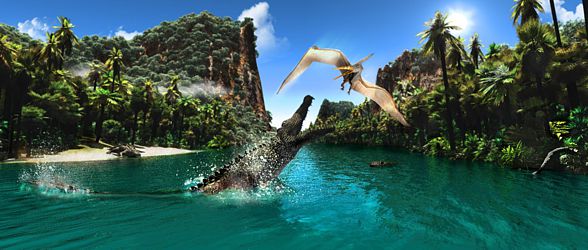
Deinosuchus – interesting facts
- Conceivably the Deinosuchus could swim out on the open ocean waters, as well as the present-day saltwater crocodile (Crocodylus porosus). Those suppositions are still unsupported with hard evidence.
- Some experts claim that in terms of diet Deinosuchus is very similar to the American alligator (Alligator mississippiensis).
- In the eastern parts of North America Deinosuchus was the largest predator, being also at the top of the food chain. Predatory dinosaurs – Albertosaurus genus and Appalachiosaurus montgomeriensis – controlling the land areas during that time could not threaten the
- Deinosuchus had a bite force larger than T. rex (Tyrannosaurus rex), which crushed its food with the force of 6 tons/cm2, while Deinosuchus took advantage of a bite force of about 10 tons/cm2.
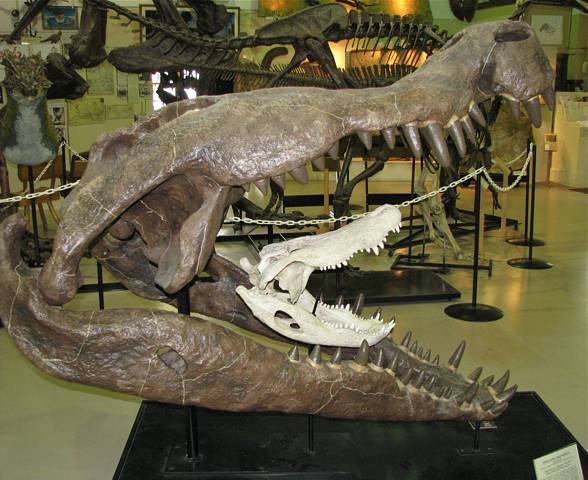
Recommended
- Animals records
- Extinct animals
- Sarcosuchus – SuperCroc
- Rhamphosuchus
- Largest crocodiles Top 10
- Gigantopithecus
- Megafauna
- Titanoboa
- Megalodon
- American lion
- Cave lion
- Smilodon
- Largest eagles Top10
- Largest birds of prey
- Fastest animals – Top 10
- Fastest birds – Top 10
- Most venomous snakes – Top 10
- Largest sharks Top 10
- Heaviest land animals
- Largest whales TOP 10
- Longest snakes Top 10
- Highest (Top) flying birds – Top 10
- Largest and heaviest birds
- Largest turtles TOP 10

